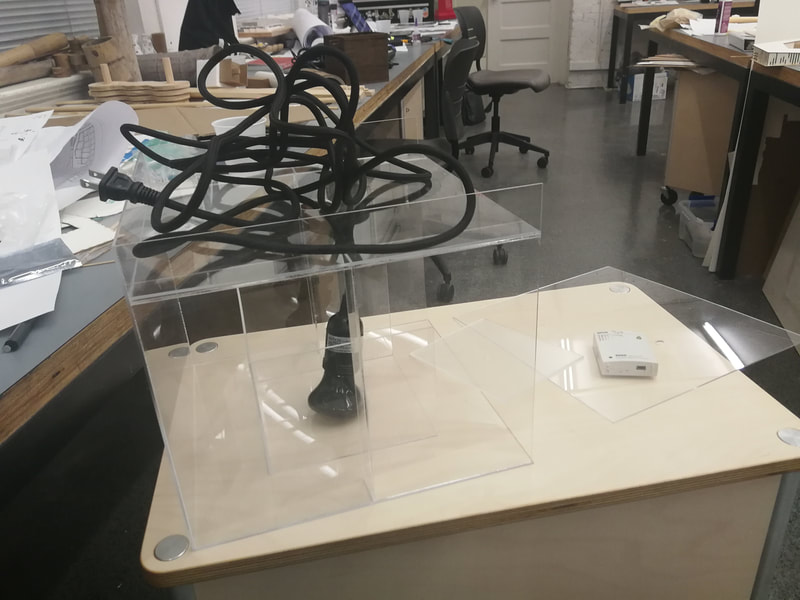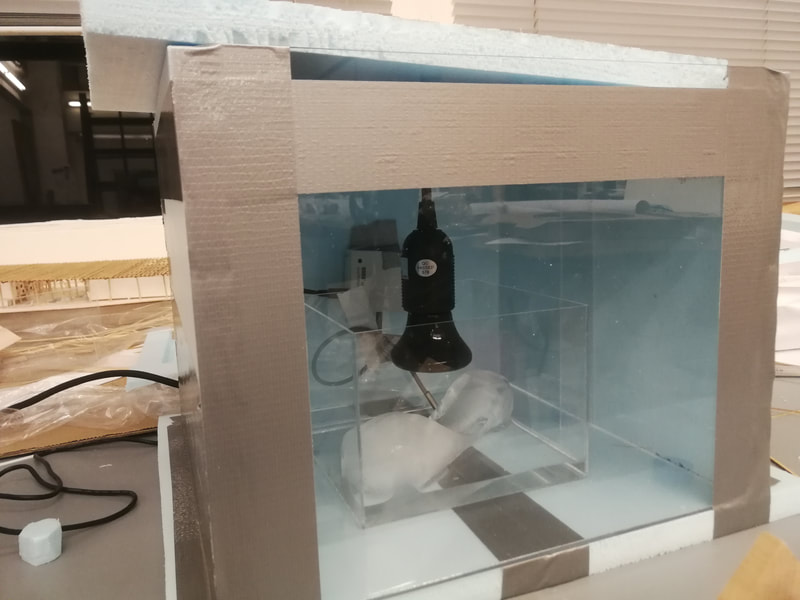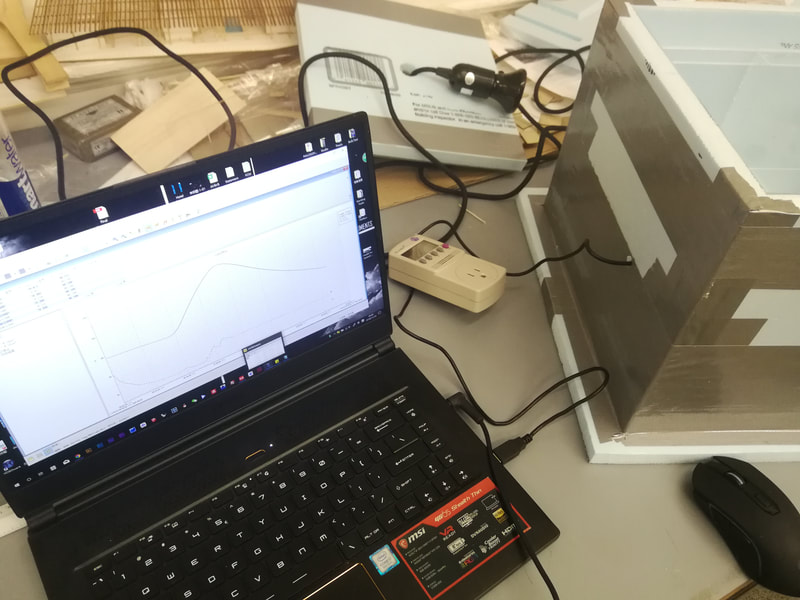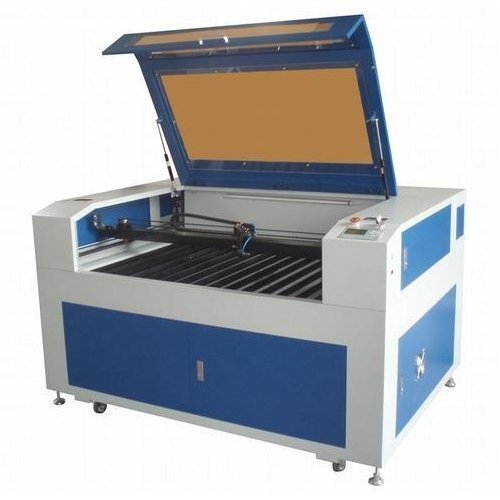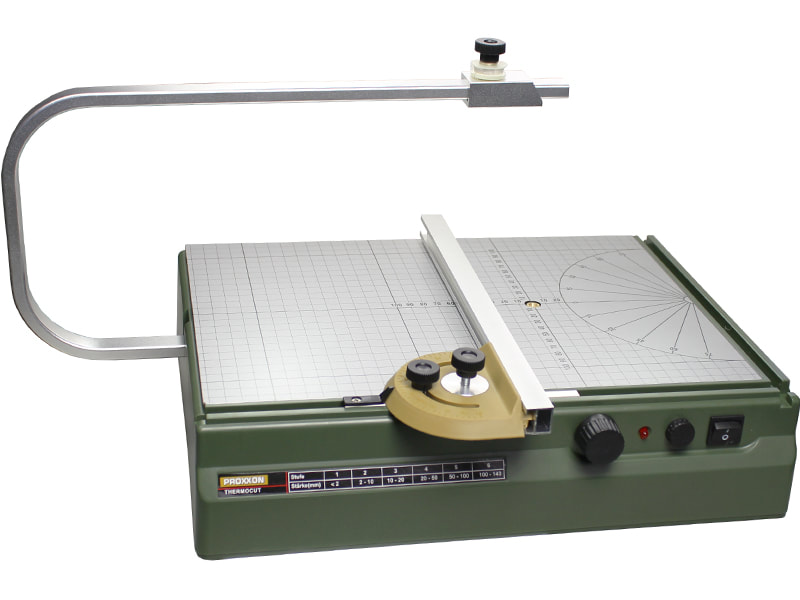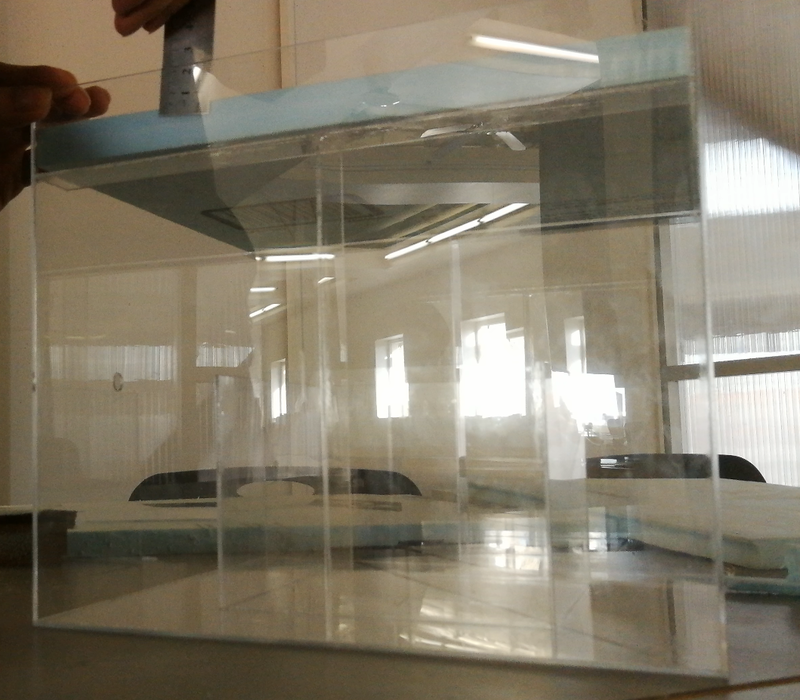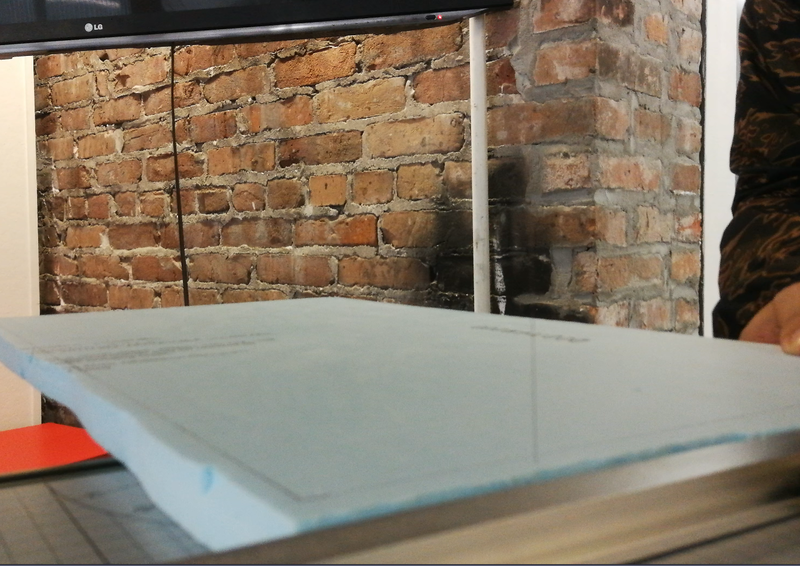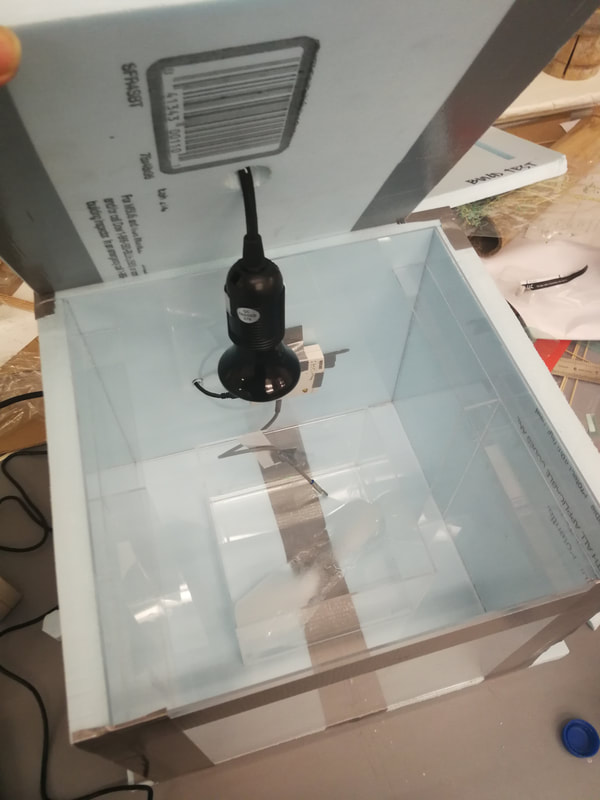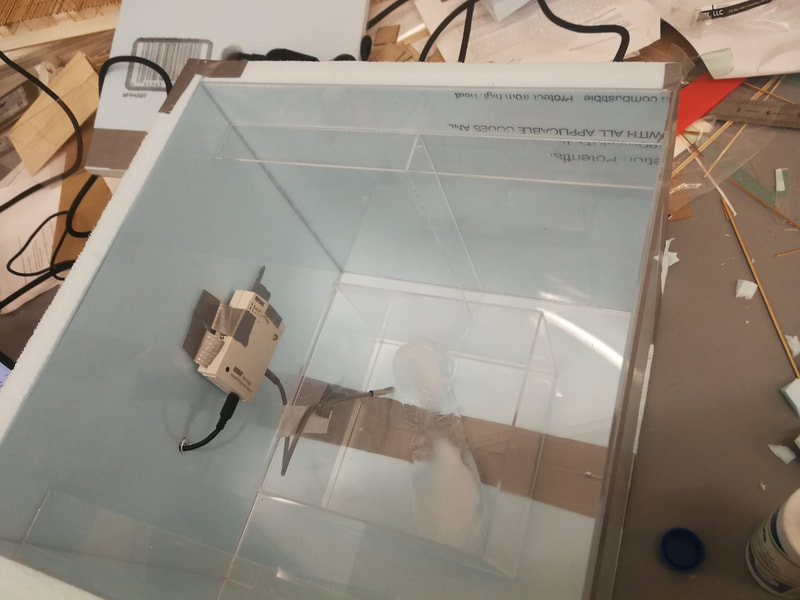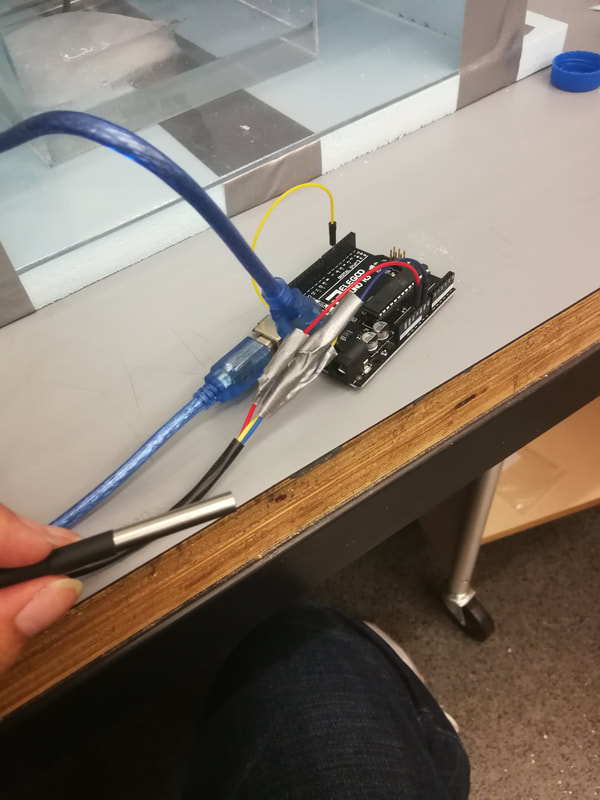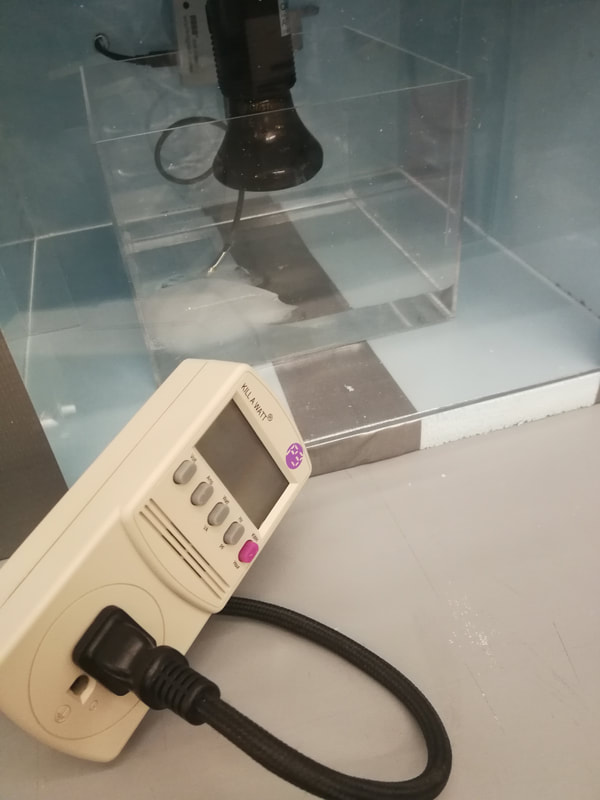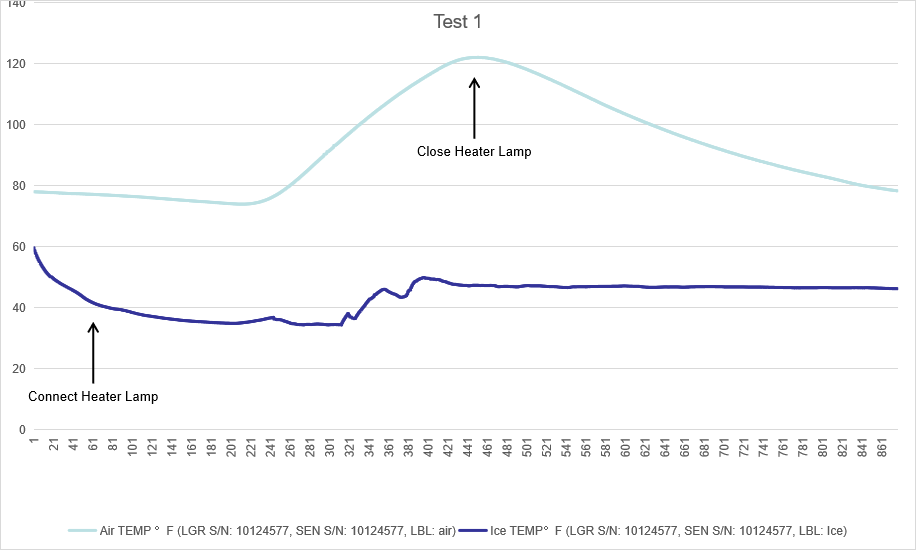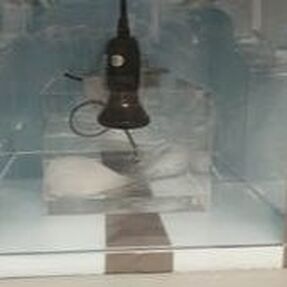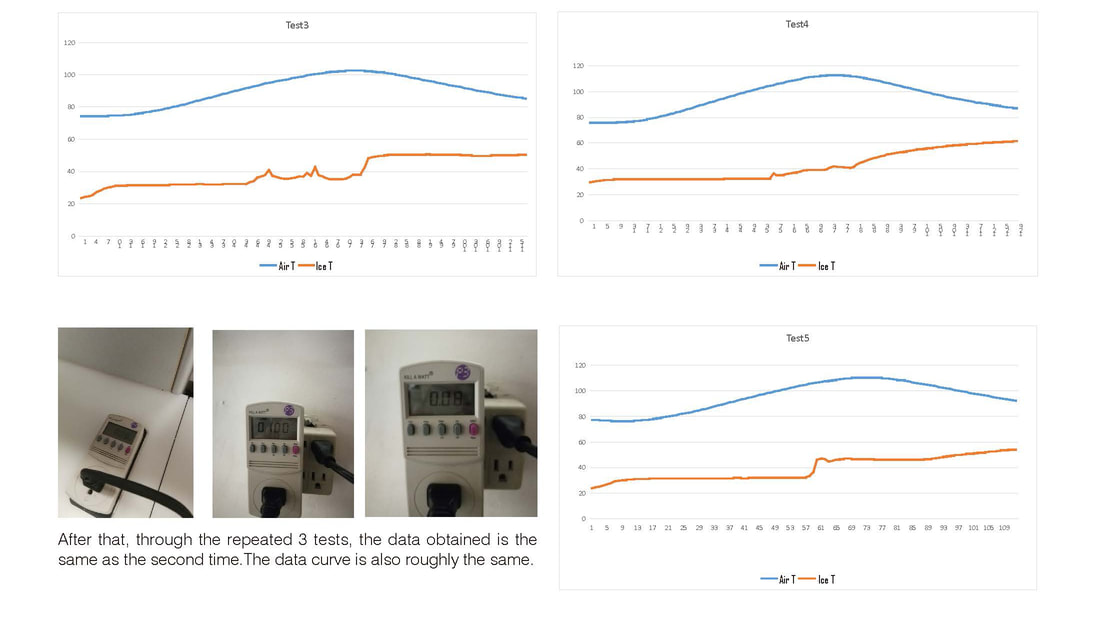Final Box
Cutter |
Materials |
Measuring Instrument
|
Heater Lamp
|
Water Sensor For Hobo
|
Water Sensor For Arduino
|
Current Monitor
|
Ice Melt Process
First Test Data
Result
Second Test
|
The second test was mainly to measure the loss of energy of melting 1 lb of ice. According to the data, the total energy consumed is 0.08 kw/h, which is 1 hour. Compared with 0.04 kw/h of the standard data, it can be known that the energy lost by the device is 0.04 kw/h.
|
|
Repeat Test
Conclusion
The conclusion is that the energy contained in 1 lb of ice is 0.04 kw/h (144 BTU).
Reflection
Through testing, the energy lost by the box can be calculated, so this device can be used to test and verify the latent heat of some solid phase change materials, like paraffin. In addition, it is also possible to test whether adding other substances such as acidic juice to ice will change the energy loss.
